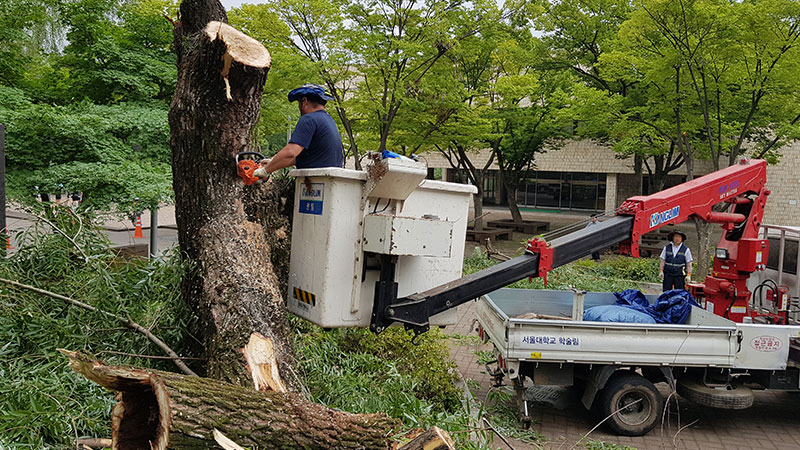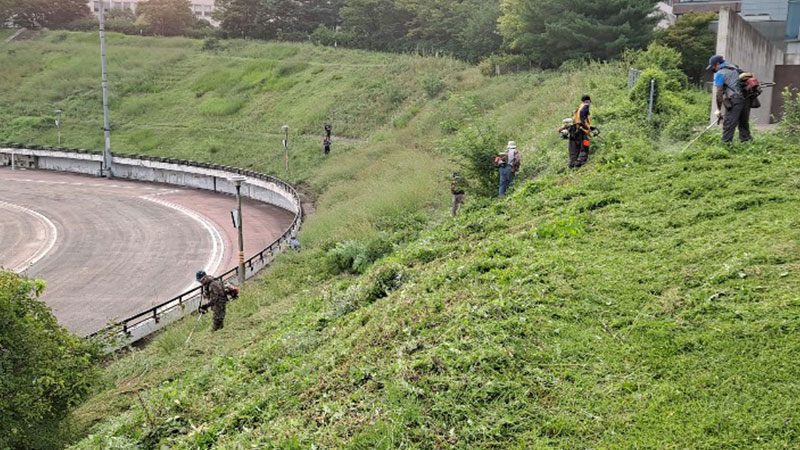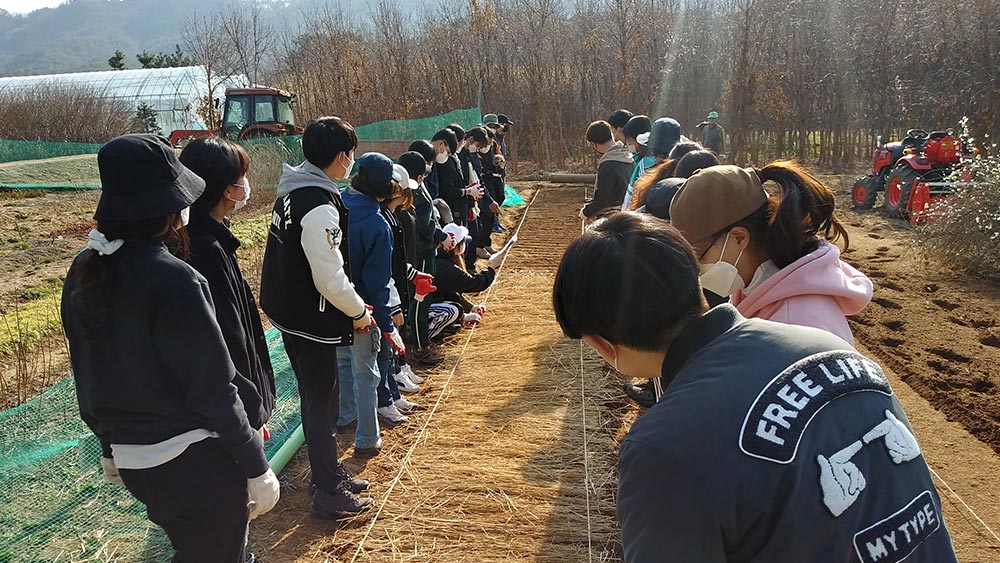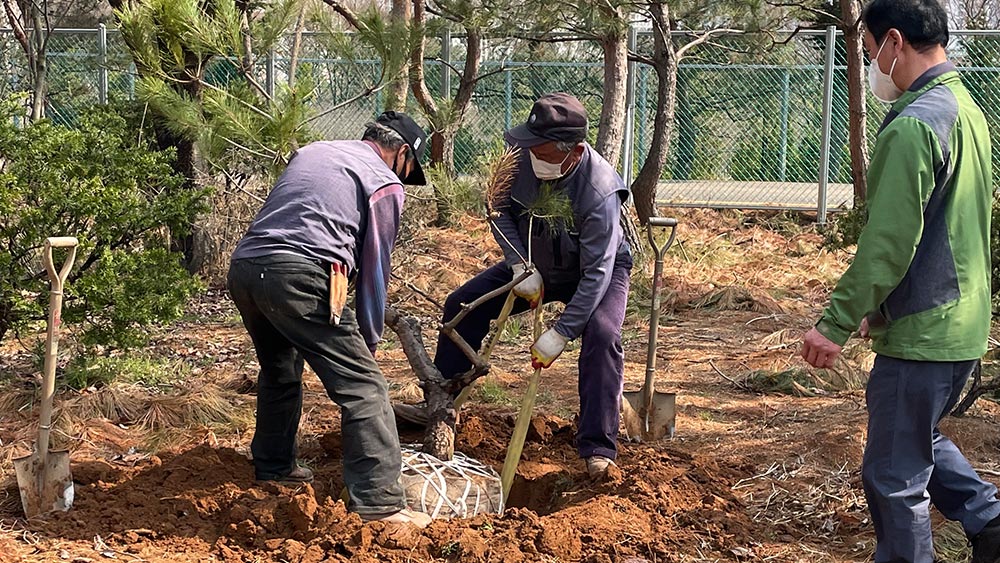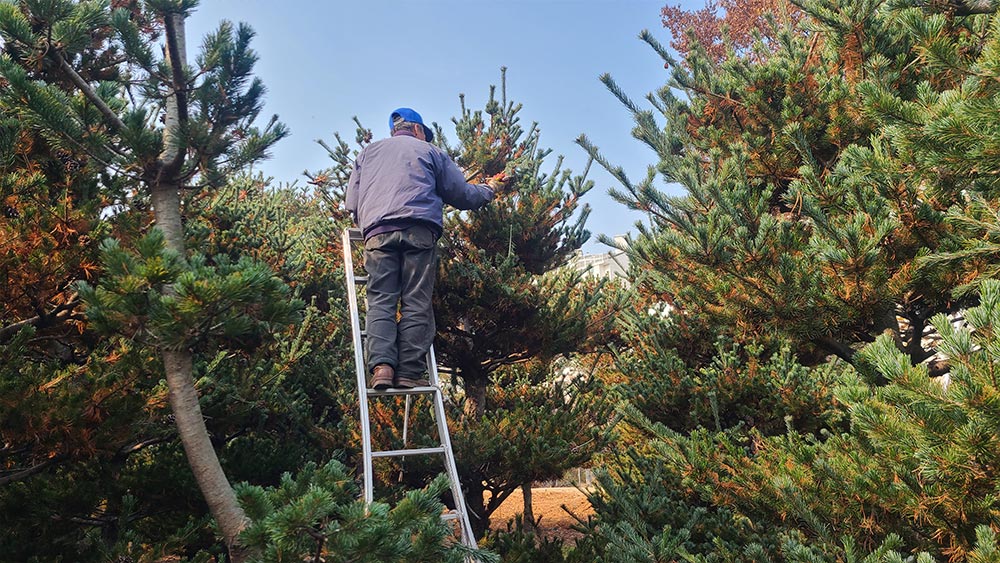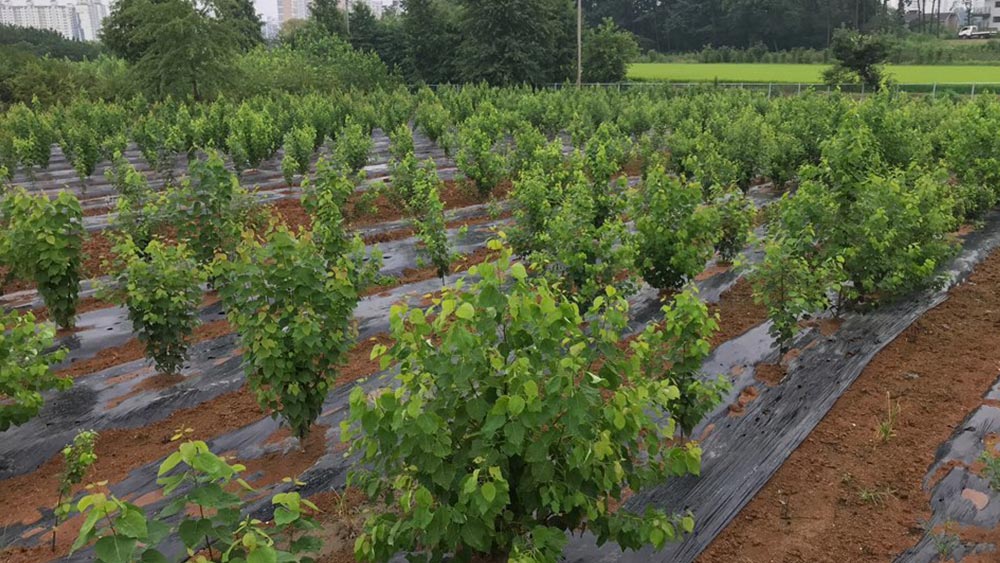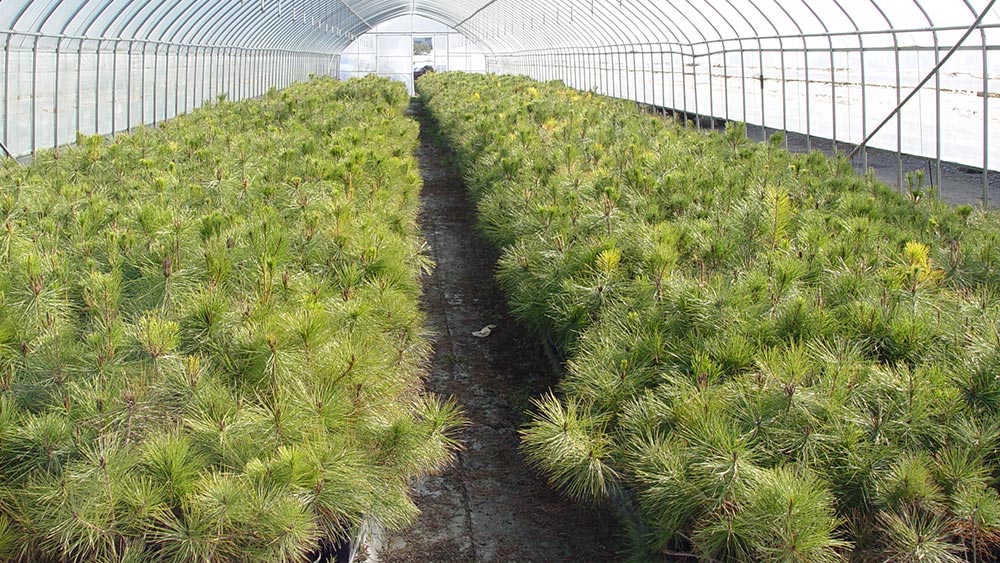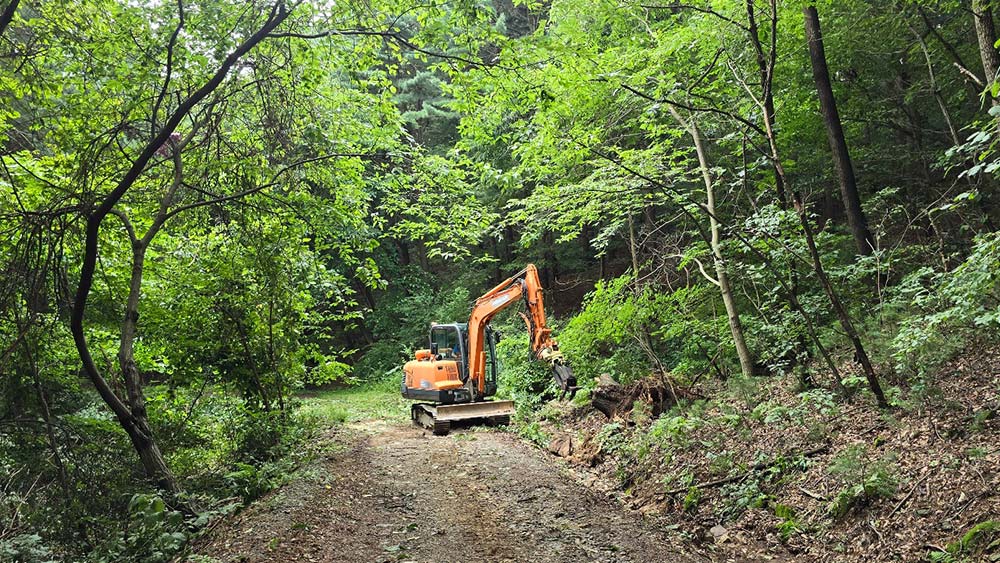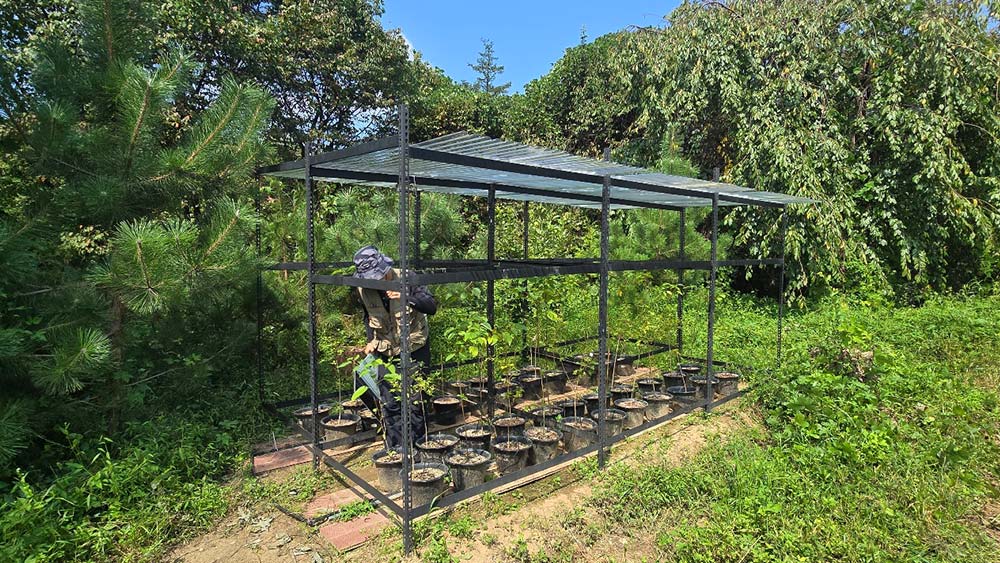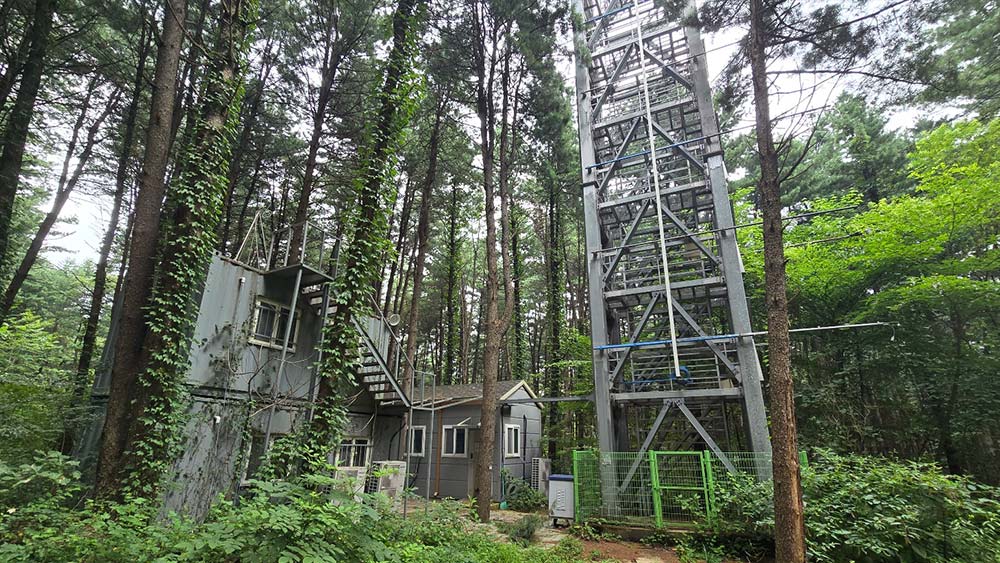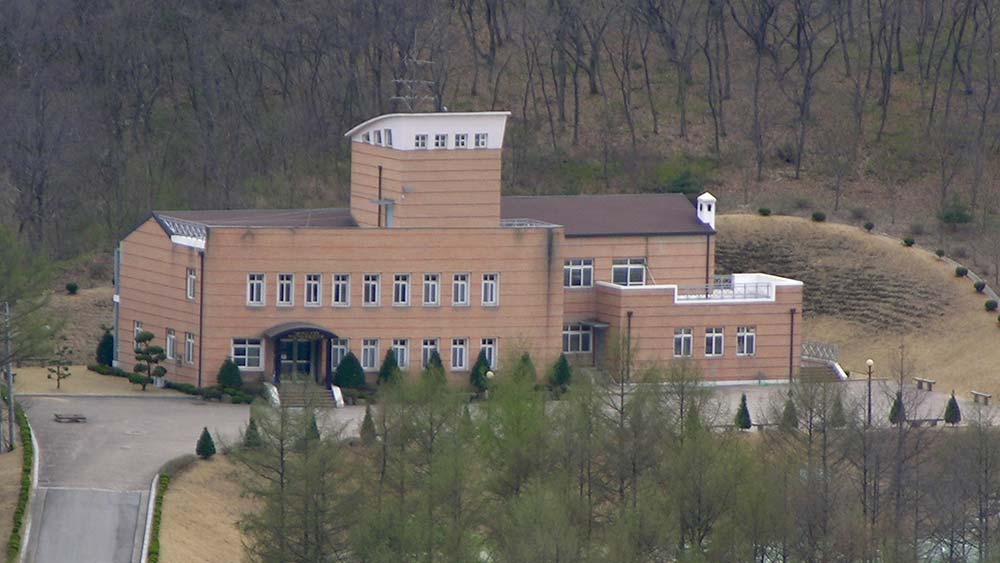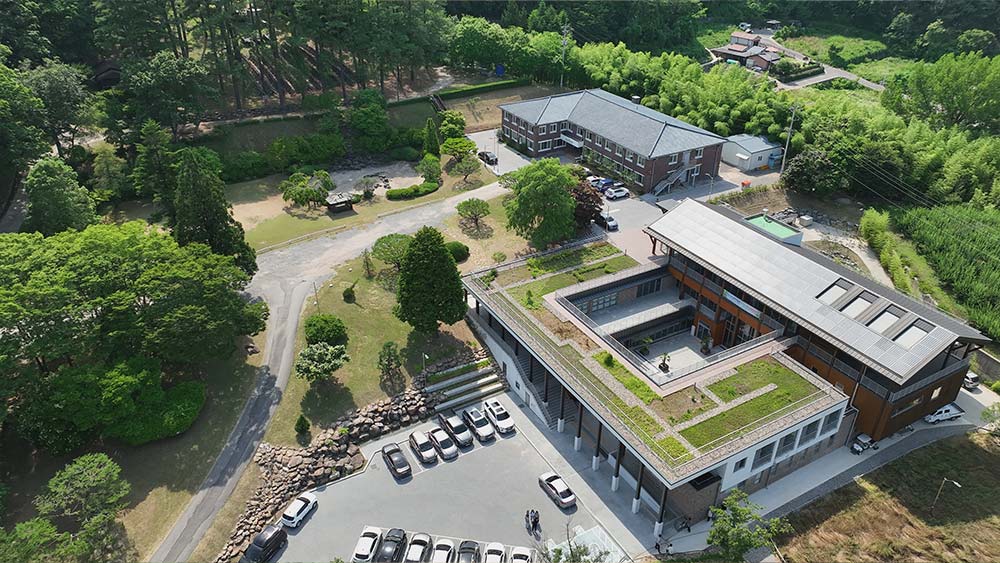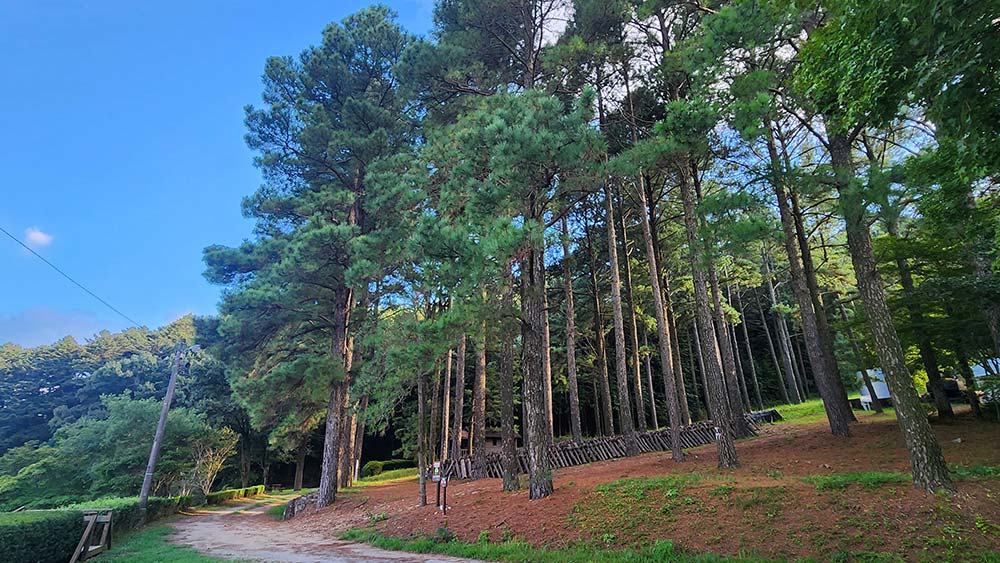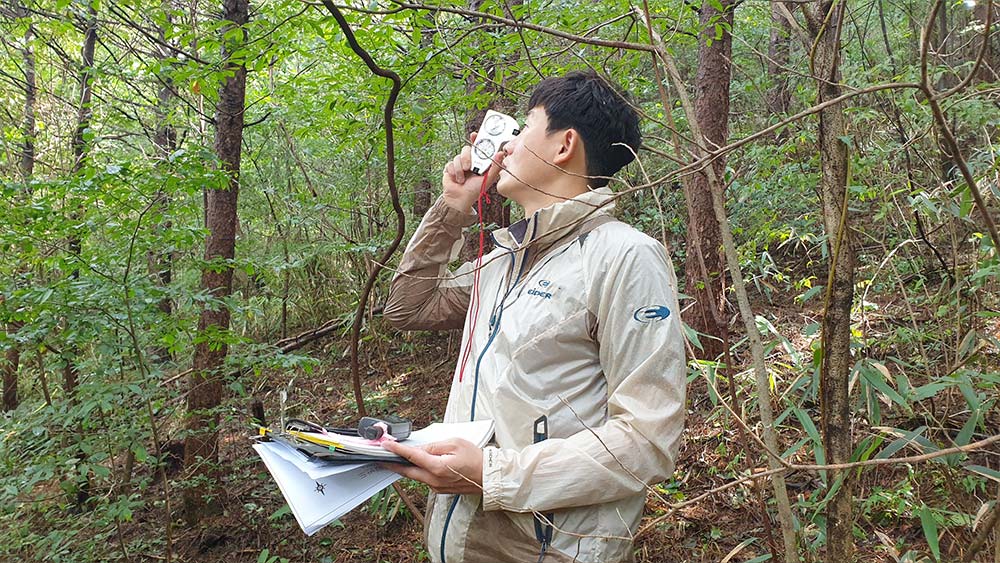The Seoul National University Agricultural and Life Sciences Forest was established for the purpose of academic advancement, including experimental research in forest science, student practical training, and the dissemination of research findings. Currently, it comprises the Headquarters Forest on the Gwanak Campus, which oversees landscape tree management and academic forest administration, along with regional academic forests: the Chilbosan Academic Forest in Suwon, Gyeonggi Province; the Taehwasan Academic Forest in Gwangju, Gyeonggi Province; and the Nambu Academic Forest in Gwangyang and Gurye, South Jeolla Province.
The Taehwasan and Nambu Academic Forests support on-site practical training and academic research within the forest areas, while the Chilbosan Academic Forest primarily focuses on developing tree management technologies and producing landscape trees, centered around its nursery. Universally, Seoul National University's academic forests are utilized for educational and research purposes by faculty, students, and the general public, both within the university community and nationwide. Established under Article 23, Clause 3 of the Seoul National University Regulations and operated in accordance with the Regulations on the Academic Forests of the College of Agriculture and Life Sciences, the academic forests initially concentrated on experimental projects such as seedling cultivation, afforestation, and timber production.
More recently, with the increasing demand for biodiversity conservation, climate change response, and forest ecosystem services, efforts are also being directed towards enhancing the economic, cultural, and educational values of forests. Notably, long-term ecological monitoring is a fundamental task of the academic forests to address rapidly changing environmental issues, and they are exploring sustainable and sound forest management practices based on scientific data. Through these endeavors, the academic forests aim to communicate the significance and value of forest conservation to university members and the general public.
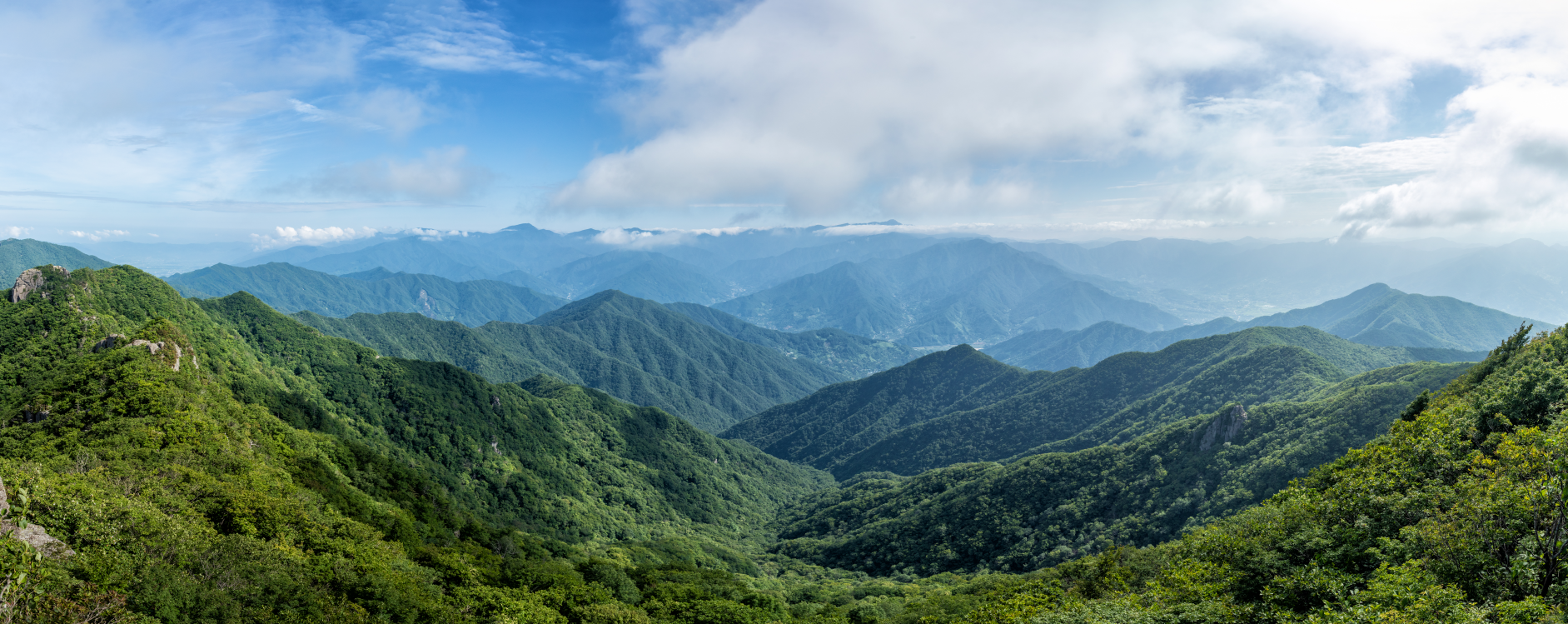
The Headquarters Academic Forest was established on the Gwanak Campus to oversee administrative support and other tasks for the regional academic forests.
Its official name is simply ‘Academic Forest,’ but for clarity and to distinguish it from the academic forests as a whole, it is conveniently referred to as the ‘Headquarters Academic Forest.’ Unlike the regional academic forests, the Headquarters Academic Forest does not directly manage any separate forest areas. Instead, it supports the administrative operations of the regional academic forests, led by the Director of the Academic Forests, who oversees all academic forest affairs. Additionally, it plans and implements major academic forest initiatives, such as international collaborations and the organization of operating committee meetings. Furthermore, with the relocation of the College of Agriculture and Life Sciences to the Gwanak Campus, the Headquarters Academic Forest has been entrusted with the management of the Gwanak Campus landscaping by the Campus Management Division since 2004.
The Chilbosan Academic Forest, established in 1928, is located in Suwon and Hwaseong, Gyeonggi Province. Of its total area of 124 hectares, 111 hectares are forested, including a pitch pine forest planted in the 1930s, which was the first of its kind in Korea and continues to thrive today.
The remaining area is developed as a nursery and is used for practical training, research, and the production of urban landscaping trees. Due to its close proximity to the Gwanak Campus, it is actively used as a field practice site, with key support areas including seed sowing, cuttings, tree planting, and transplantation. Recently, it has also been utilized as a hands-on field training location for the university's plant hospital arborist training program and for tree doctors to practice tree management.
- Research on the creation of genetic breeding populations and development of genetic linkage maps
- Development of forest management guidelines by stand characteristics
- Development of Trichoderma-mediated iron oxide nanoparticles for improving resistance of fir trees under drought stress
- Analysis of the Hallasan Mountain Pine Tree Disease Survey
- Management of the Forest Service Registered Acacia Tree Variety Preservation Center
- Test for breeding polyphylla spp.
- New breeding test for yellow and red maple zelkova varieties
The Taehwasan Academic Forest is located in Docheok-myeon, Gwangju, Gyeonggi Province. Established as the Central Practice Forest in 1979, its name was changed to the Taehwasan Academic Forest in 2006. It covers a total area of 795 hectares with an elevation ranging from 150m to 644m. The lower slopes of the forest consist of gently sloping artificial plantations of Japanese larch and Korean pine, while the higher elevations feature well-developed natural forests of oak species, ash, cornelian cherry, wild cherry, and Japanese snowbell.
A key research facility within the Taehwasan Academic Forest includes two flux towers installed in the Korean pine and oak stands. These atmospheric observation towers, standing at 41 meters (established in 2010) and 27 meters (established in 2015), respectively, measure the exchange of carbon dioxide and water between the atmosphere and the different forest stands, contributing to research on forest climate change. The ongoing research at the Taehwasan Academic Forest includes the following.
- Development of forest management guidelines by stand characteristics
- Monitoring carbon and water balance of evergreen coniferous and deciduous broad-leaved forests in Taehwasan using eddy covariance system
- Evaluation of the applicability of backpack lidar and drone lidar for investigating biomass in upper and lower layers of forest mounds
- Elucidating the role of the gorani as a vector for dispersing ectomycorrhizal fungi
- Species-specific seedling production method for improving drought tolerance of afforestation species: Quantification of plasticity and elasticity of drought tolerance genes and drought acclimation
The Nambu Academic Forest is located in Gwangyang and Gurye, South Jeolla Province. It is the largest among the three regional academic forests, covering 16,000 hectares, and geographically spans diverse altitudes and climate zones, from the vicinity of Baekunsan Mountain's southern coast to the subalpine regions of Jirisan Mountain. The history of the Nambu Academic Forest dates back to 1912 when the College of Agriculture of Tokyo Imperial University established it as the Jeonnam Practice Forest. Following the liberation in 1946, it was designated as the Gwangyang Practice Forest of Seoul National University and is currently managed as the Seoul National University Nambu Academic Forest.
Although situated in the warm-temperate southern region, the Nambu Academic Forest encompasses a wide range of vegetation zones due to its elevation varying from 23m to 1,732m. Rich in water resources, wildlife, and plant resources, it serves as a valuable site for diverse experimental research. Furthermore, 91% of its area consists of natural forests. In the Baekunsan area, warm-temperate species such as Eurya japonica grow naturally, while in the subalpine regions around Banyabong Peak in Jirisan Mountain, subarctic species like Abies koreana, Picea jezoensis, and Betula costata thrive, allowing for direct observation of the vertical distribution of forest vegetation zones. In the artificial forest areas, 34 species, including Pinus rigida, Pinus thunbergii, and Pinus taeda, have been planted. Additionally, approximately 780 plant species inhabit the forest, including Korean endemic plants like Cimicifuga heracleifolia and Cypripedium japonicum, as well as endangered plants. The ongoing research at the Nambu Academic Forest includes the following.
- Carbon and water balance quantification and economic value assessment of Baekunsan and Taehwasan academic forests for the carbon neutral era
- Observation experiment on the impact of forest water supply
- Exploring the stability of ecosystem organic matter
- Study on spatiotemporal changes in alpine ecosystems due to climate change (pine, fine dust)
- Monitoring endangered alpine conifer species
- Operation and management of an ex-situ alpine conifer conservation center
- Baekunsan Jangsuhaneulso Wild Adaptation Experiment
- Long-term monitoring study on water circulation in Gwangyang forest in Jeonnam
- Research on carbon absorption prediction technology according to forest transition
- Correlative evolutionary studies of insect defense strategies
- Permanent sample plot vegetation survey

